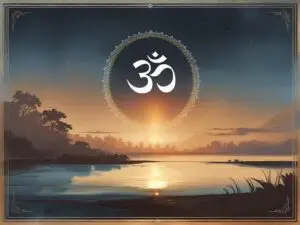By Dr Bhaskar Bora
Let us explore Goddess Kamakhya and divine feminine power
The Power We Don’t Always Speak Of
Some places in this world don’t just show you something — they make you feel something.
Kamakhya is one of those places.
Perched on the Nilachal Hills of Assam, looking out over the mighty Brahmaputra, the Kamakhya Temple is not like other sacred sites. There’s no statue inside. No towering deity behind glass. What’s worshipped here is far more raw, more real — a yoni, the symbol of creation, the embodiment of Shakti, the divine feminine energy that gives life, nourishes it, and yes, takes it away when it’s time.
Kamakhya doesn’t whisper holiness but roars it.
She doesn’t demand reverence through fear but draws it out through awe.
This isn’t just ancient mythology. This is a living reminder of our roots, our rituals, and our relationship with the feminine in the world and within ourselves.
The Story of Kamakhya: More Than a Legend
Like all powerful places, Kamakhya’s story begins with heartbreak.
Sati, Shiva’s first consort, took her own life after her father humiliated her husband. In grief, Shiva wandered the universe with her lifeless body. As her form began to fall apart, the pieces scattered across the subcontinent, and where they landed, Shakti Peethas were born.
At Kamakhya, it is believed her womb and genitals — the very essence of creation — fell.
Think about that. A temple built not around a war god or a celestial kingdom, but around the seat of life itself. Around menstruation, fertility, and divine desire. It doesn’t shrink away from these themes — it celebrates them.
There’s no sugar-coating here. No tidy metaphors. Kamakhya honours the feminine in its fiercest, wildest, most unapologetic form.
Tantra at Kamakhya: Sacred, Not Sensational
If you’ve ever heard Tantra talked about with a raised eyebrow or an uncomfortable laugh, you’re not alone.
Most people misunderstand it — reducing it to taboo or titillation. But Tantra is none of that. At its core, Tantra is sacred union: of the body and the soul, the feminine and the masculine, the seen and the unseen.
Kamakhya is one of the most revered Tantric centres in India, not for shock value — but for seekers. Here, the body is not an obstacle to enlightenment. It is a vessel. A temple. A field of energy.
Sadhakas don’t run from flesh and blood. They embrace it, not as weakness, but as the most honest path to truth.
To walk into Kamakhya is to unlearn centuries of shame around the body, around womanhood, around power.
Here, the divine feminine is not quiet.
She is not modest.
But she is sovereign.
Ambubachi Mela: When the Goddess Rests
Once a year, Kamakhya’s doors close.
No offerings, rituals or pilgrims.
Why?
Because the goddess is believed to be menstruating.
This isn’t hidden. It’s not whispered in shame. It’s celebrated. The Ambubachi Mela draws thousands from all over India and beyond — not despite this pause, but because of it.
The temple rests. The energy turns inward. And when it reopens, it does so with reverence and joy — a collective honouring of the cycle that makes all life possible.
In a society where menstruation is still wrapped in silence and stigma, Kamakhya does something radical.
She says: This, too, is holy.
Kamakhya Is a Mirror for Modern Womanhood
For any woman who has felt too loud, too bold, too much, Kamakhya is your temple.
She doesn’t ask you to behave. She asks you to be.
Here, the divine isn’t draped in white and purity. She’s fierce.
She bleeds. She creates, destroys and desires.
And she does it without apology.
In a world that still polices women’s bodies, their voices, their worth — Kamakhya stands tall, saying:
- Your cycles are not shameful.
- Your body is not a battleground.
- Your power is not optional.
What Kamakhya Offers Men
Kamakhya is not only for women. Far from it.
Men come here too, not to dominate, but to witness. Not to lead, but to learn.
In a world where masculinity is often confused with control, Kamakhya offers something softer and stronger:
Balance.
To truly understand Tantra is to know that Shiva without Shakti is Shava — a lifeless form.
And so Kamakhya invites men into a different kind of strength — one that respects, honours, and integrates the feminine instead of fearing it.
Kamakhya and Assam: A Sacred Connection
For us in Assam, Kamakhya isn’t just a holy site on a map — she’s woven into our stories, our families, our festivals.
She’s in the songs passed down by grandmothers.
In the rituals quietly performed at home.
In the silence, we observe when she bleeds.
While much of India sees the Northeast as distant or different, Kamakhya is proof that spiritual power flows from every part of this land, especially the parts you weren’t looking at.
What the World Needs from Kamakhya
Kamakhya is more than a temple. She is a reminder. A recalibration.
She reminds us that strength and softness are not enemies.
That the body is not dirty — it is divine.
That life is not linear — it is cyclical.
In a world obsessed with perfection, Kamakhya teaches acceptance.
In cultures obsessed with productivity, she teaches pause.
And in systems obsessed with control, she teaches surrender.
Let Her In
You don’t need to be religious to visit Kamakhya.
You don’t even need to understand every ritual or chant.
All you need is a willingness to feel. To stand still. To let her presence unravel something inside you.
Because she will.
She’ll break the parts of you that cling to control.
Soften the parts of you that are too guarded to love.
And awaken the parts you’ve been told to keep quiet.
Kamakhya is not just a place you go to.
She is a force you allow in.
And when you do, you may discover something holy—not in the skies above, but in your skin, your own story, your breath.
Read more Blogs here
For more stories and interesting reads, click here
#GoddessKamakhya #DivineFeminine #ShaktiPower #TantraInHinduism #SacredFeminine #KamakhyaTemple #AmbubachiMela #LifeEtcetra #IndianSpirituality #BhaskarBoraWrites #SpiritualFeminism



